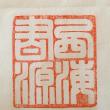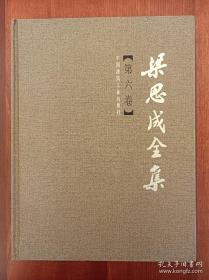
Two Essays in Analytical Psychology (进口原版,国内现货)
Collected Works of C.G. Jung, Volume 7
¥ 356 九五品
仅1件
上海长宁
认证卖家担保交易快速发货售后保障
作者C.G. Jung (author); R.F.C. Hull (translator)
出版社Princeton University Press; 2nd edition
ISBN9780691017822
出版时间1972-04
版次2
装帧平装
尺寸23 × 15 cm
页数369页
货号g2
上书时间2019-10-26
- 在售商品 暂无
- 平均发货时间 13小时
- 好评率 暂无
- 最新上架
商品详情
- 品相描述:九五品
- 外表少许磨损,新书未曾使用(见书影)。
- 商品描述
-
This volume has become known as perhaps the best introduction to Jung's work. In these famous essays. "The Relations between the Ego and the Unconscious" and "On the Psychology of the Unconscious," he presented the essential core of his system. Historically, they mark the end of Jung's intimate association with Freud and sum up his attempt to integrate the psychological schools of Freud and Adler into a comprehensive framework.
This is the first paperback publication of this key work in its revised and augmented second edition of 1966. The earliest versions of the Two Essays, "New Paths in Psychology" (1912) and "The Structure of the Unconscious" (1916), discovered among Jung's posthumous papers, are published in an appendix, to show the development of Jung's thought in later versions. As an aid to study, the index has been comprehensively expanded.
Carl Gustav Jung (1875 to 1961) was a Swiss psychiatrist, an influential thinker and the founder of analytical psychology (also known as Jungian psychology). Jung's radical approach to psychology has been influential in the field of depth psychology and in counter cultural movements across the globe. Jung is considered as the first modern psychologist to state that the human psyche is "by nature religious" and to explore it in depth. His many major works include "Analytic Psychology: Its Theory and Practice," "Man and His Symbols," "Memories, Dreams, Reflections," "The Collected Works of Carl G. Jung," and "The Red Book."
— 没有更多了 —





















以下为对购买帮助不大的评价